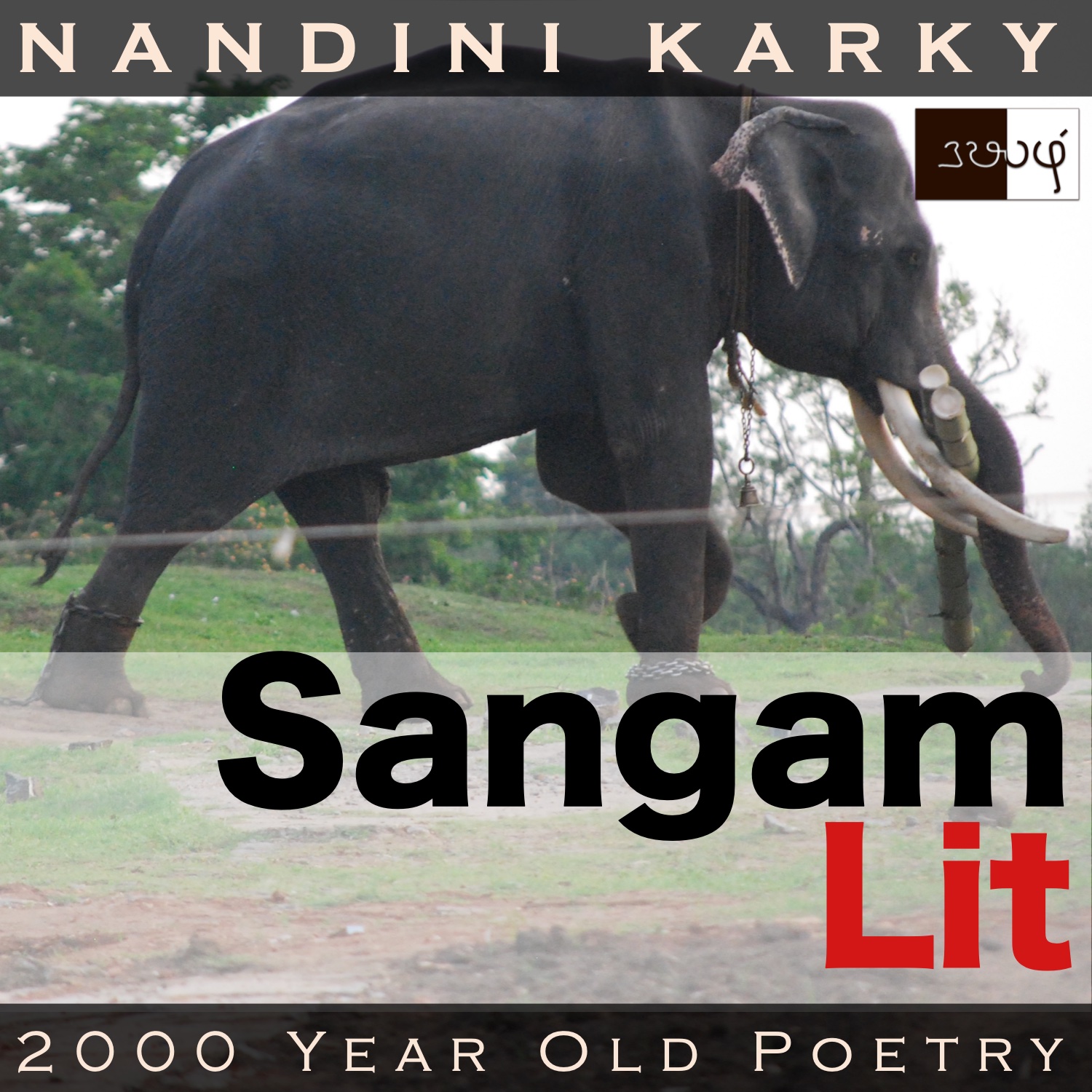Podcast: Play in new window | Download
Subscribe: Apple Podcasts | Spotify | Amazon Music | Android | iHeartRadio | Email | TuneIn | RSS | More

In this episode, we perceive the pitiable state of a king’s enemies, as portrayed in Sangam Literary work, Puranaanooru 7, penned for the Chozha king Karikaalan by the poet Karunkuzhal Aathanaar. The verse is situated in the category of ‘Vanji Thinai’ or ‘a king’s prowess in the battlefield’, and depicts the past and present of an enemy nation.
களிறு கடைஇய தாள்,
கழல் உரீஇய திருந்து அடி,
கணை பொருது கவி வண் கையால்,
கண் ஒளிர்வரூஉம் கவின் சாபத்து,
மா மறுத்த மலர் மார்பின்,
தோல் பெயரிய எறுழ் முன்பின்,
எல்லையும் இரவும் எண்ணாய், பகைவர்
ஊர் சுடு விளக்கத்து அழு விளிக் கம்பலைக்
கொள்ளை மேவலை; ஆகலின், நல்ல
இல்ல ஆகுபவால் இயல் தேர் வளவ!
தண் புனல் பரந்த பூசல் மண் மறுத்து
மீனின் செறுக்கும் யாணர்ப்
பயன் திகழ் வைப்பின் பிறர் அகன் தலை நாடே.
Karikaalan is the most famous of the Sangam era Chozha kings, and is said to be one who expanded the empire of the early Chozhas. Other than empire building, he has the honour of being the one who commissioned the world’s oldest dam known as ‘Kallanai’ or ‘Grand Anicut’. Let’s delve into the poet Karunkuzhal Aathanaar’s words about this king that follows:
“With legs that propel elephants, with immaculate feet having impressions of warrior anklets, with strong hands that bend to place arrows on a bow that shines radiantly before the eyes, with a vast chest that makes the goddess refuse all others, with a might to fight even with elephants, thou art!
Without considering whether it’s day or night, you set out to plunder the towns of your enemies, setting the lands ablaze and making the people cry aloud with suffering. And so, there is nothing good left there, O rider of a well-built chariot!
Instead of using sand spread by the cool stream, they utilise fish to dam holes in mudbanks. Such was the past prosperity of those wide spaces in the nations of those others!”
Time to delve into the intricacies in the portrait of this king. The poet starts by sketching the ruler’s physical features. He talks about how the king’s thighs press on huge elephants and how these move the animals in the direction of the king’s will. Next, he moves further down and points to how the king’s warrior anklets rub against his fine feet. From the lower limbs, he moves to the upper limbs and talks about how the king places arrows with his powerful hands on a radiant bow. As the king takes aim, the poet shifts his focus to the king’s wide chest, which he describes as the favourite abode of the goddess of victory, so much so, that when others come seeking her favour, she turns a blind eye to them. With a mention of the king’s strength to even chase away elephants, the poet concludes his portrait.
Shifting the spotlight from the king’s appearance and strength to his actions, the poet describes how the king seems to not worry about day or night when it comes to waging war on his enemy nations so much that their cries are unending. The poet then talks about the consequence saying since the king plunders them so, nothing good at all is left in that country. And, to stress that it was not some impoverished nation which had nothing much, the poet concludes with the words that the people of those countries used to stem holes in their banks not with mere mud but with fish. So much used to be the abundance of those enemy countries, the poet implies. Fish is food, a precious commodity, and yet the people here seem to have had so much surplus that they didn’t mind using the fish as a stuffing material on banks! This may be a poetic way to elevate the prosperity of that country but whether it’s a practical solution is debatable. For won’t the fish decompose and thereby, leave open the hole once again?
Stepping away from such logical questions, let us focus on the portrait of this king. A person, no matter how handsome and strong, he seems to be one, who was bent on bringing ruin to others. History seems to look up with a hint of appreciation only at such ruthless rulers with vast empires. Looking deeper, we will find that the architect of such an empire was most probably, a person, who had no qualms about destroying peace and property for the sake of expanding his territory!
At a point in their evolution, humans seem to have turned from ‘better’ to ‘more’, meaning they have shifted from an appreciation of quality and turned to quantity. More food, more property, more territory, more money, more followers, more retweets and so on! Is this an inevitable outcome of our evolutionary path or is there hope to break this cycle of ‘more’ and choose a different path from these kings of yore?




Share your thoughts...